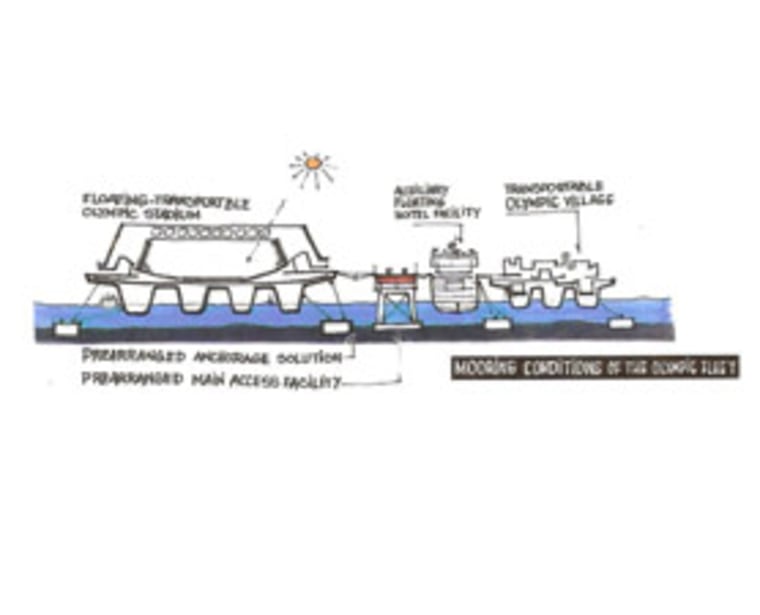When Olympics are over, the stadium and sports facilities remain. Some get repurposed, but others become painful reminders of enormous investments. To level the playing field, one architect is proposing a design for floating, reusable Olympic facilities.
"Nearly 90 percent of the world’s nations can’t afford to build for major sporting events — not just the Olympics," said Michael Burt, professor emeritus of architecture at Technion Israel Institute of Technology.
Inspired by artificial structures for marine environments, Burt developed a conceptual array of Olympic facilities, including a stadium, that could be transported along waterways and moored in major port cities.
The design calls for a stadium that can hold 150,000 spectators, as well as “modules” that would contain auxiliary sporting facilities, housing accommodations, administrative and offices. The separate modules would be towed in as needed. Once in place, the facilities would form a sturdy archipelago accessible by footbridges. Spectators and athletes could enter from a fixed pier, a pontoon bridge, a ferry or some combination.
“Not all the modules have to participate in the event,” Burt said. “It’s flexible and could be arranged in more than one way.”
The buildings would have an infinite polyhedral lattice form based on a structural surface that Burt and two others originally patented in the 1980s. The lattices are multi-layered, low density bar-and-joint trusses made from steel and connectors. According to Burt, a 650-square-foot span could be made from less than 90 pounds of steel, and covered with a lightweight material. The total cost of a single floating facility would hinge on the amount of materials used, he said.
Burt compares the Olympics to a wedding, arguing that it doesn’t make sense to build a new reception hall for a one-time event. Instead, he said of the array, “Such a complex could be reused many times a year.”
The architect thinks there could be multiple Olympic arrays, including one that primarily serves Europe. Burt said he was discussing the idea at a conference when a Chinese engineer raised the possibility of building an array just for China.
In late March, Burt presented the concept at the Technology, Knowledge and Society conference in Bilbao, Spain. Questions about who would be responsible for investing in, and then maintaining and operating the array, remain hurdles. Despite presenting the plan at international conferences over many years, Burt’s vision still hasn’t been put into motion.
“If you want to see something executed, performed, you really have to have a completely different character,” he admitted. “I’m not a pusher.”
Sean Foreman, an assistant professor of political science at Barry University in Florida who studies funding for sports stadiums and arenas, said that Olympic bids are made with larger development aims. He pointed to Olympic stadiums repurposed for home teams.
“There’s a lot to the symbolism and to the boosterism for the city to show off these magnificent facilities,” he said. The concept would work better for an Olympic village than a stadium, he added.
Foreman sees additional challenges to Burt’s idea, including the threat of piracy. However, he said a mobile facility could be spared in case of a natural disaster, given that there’s enough warning to move it.
“Logistically, it would make sense to reuse a facility that is only used once very two or four years,” he said.
